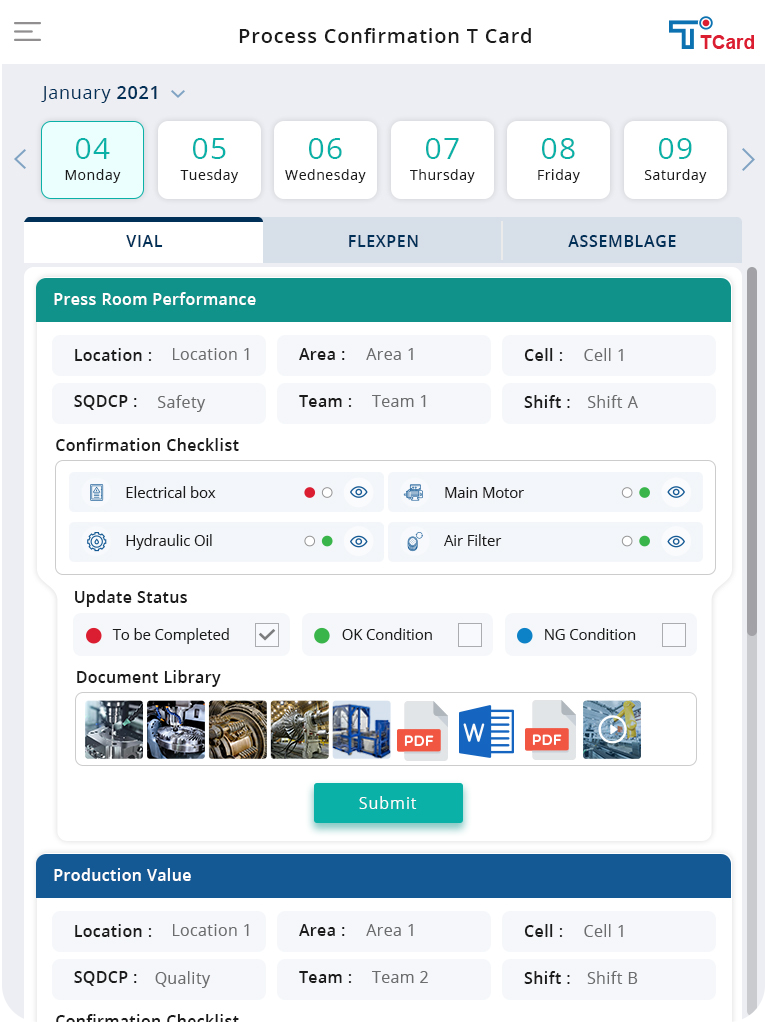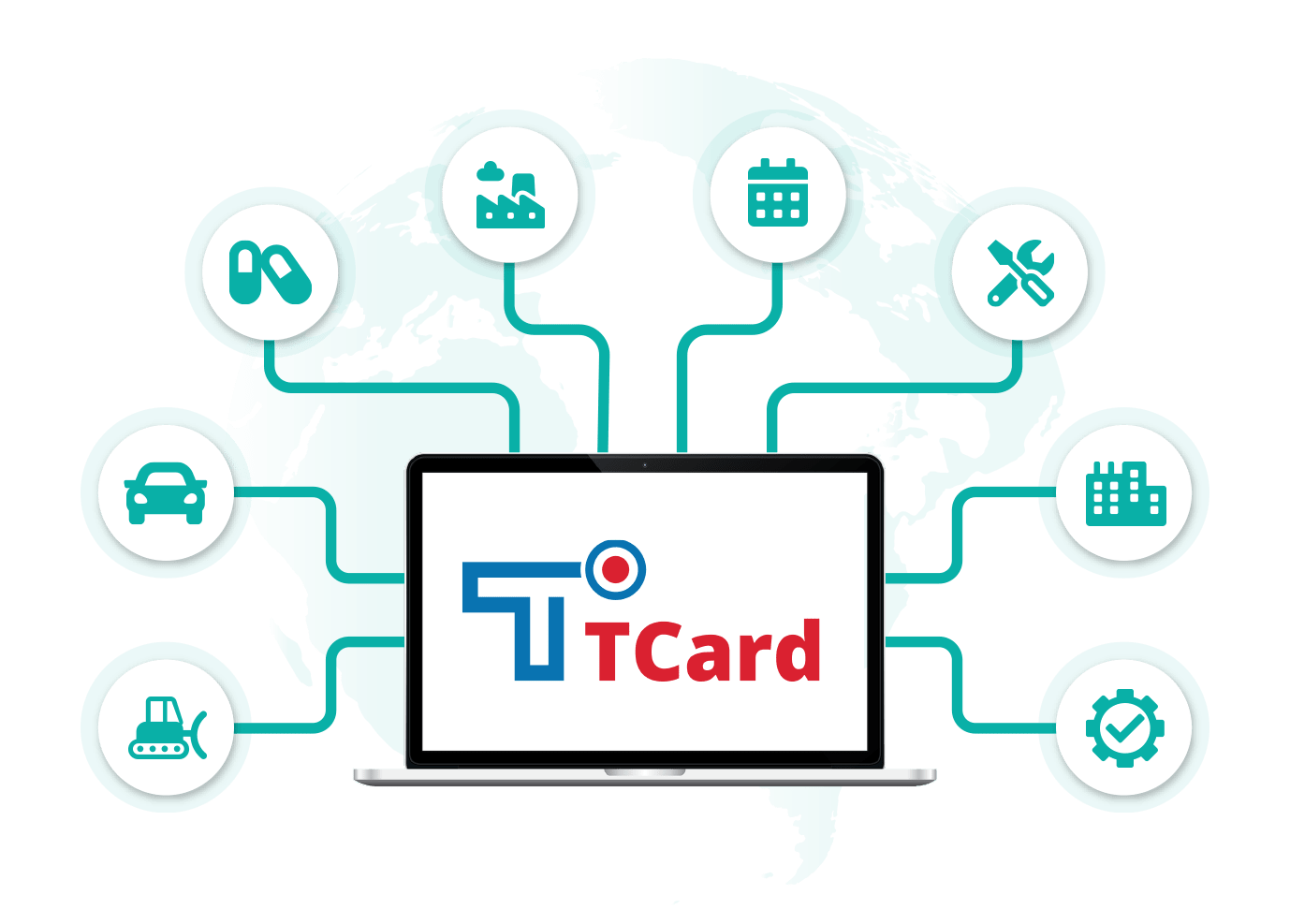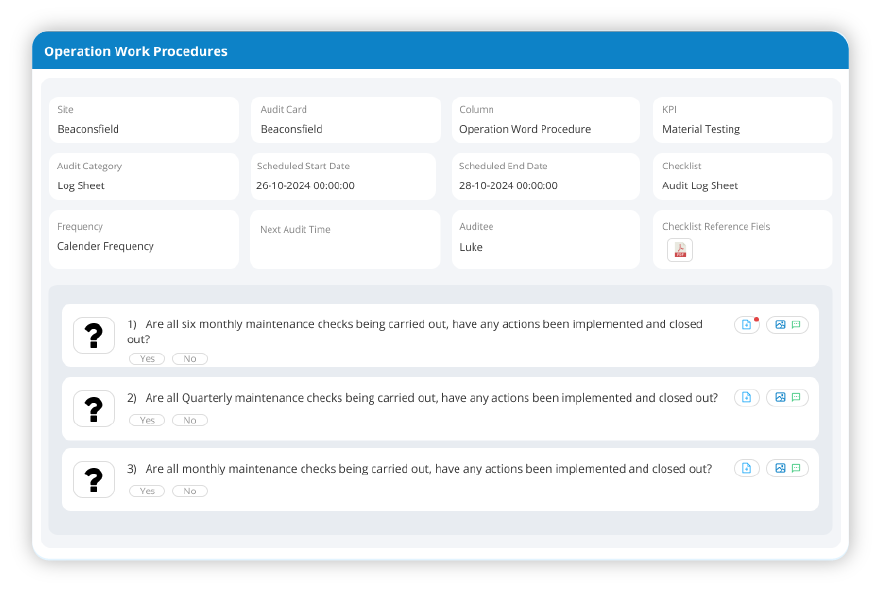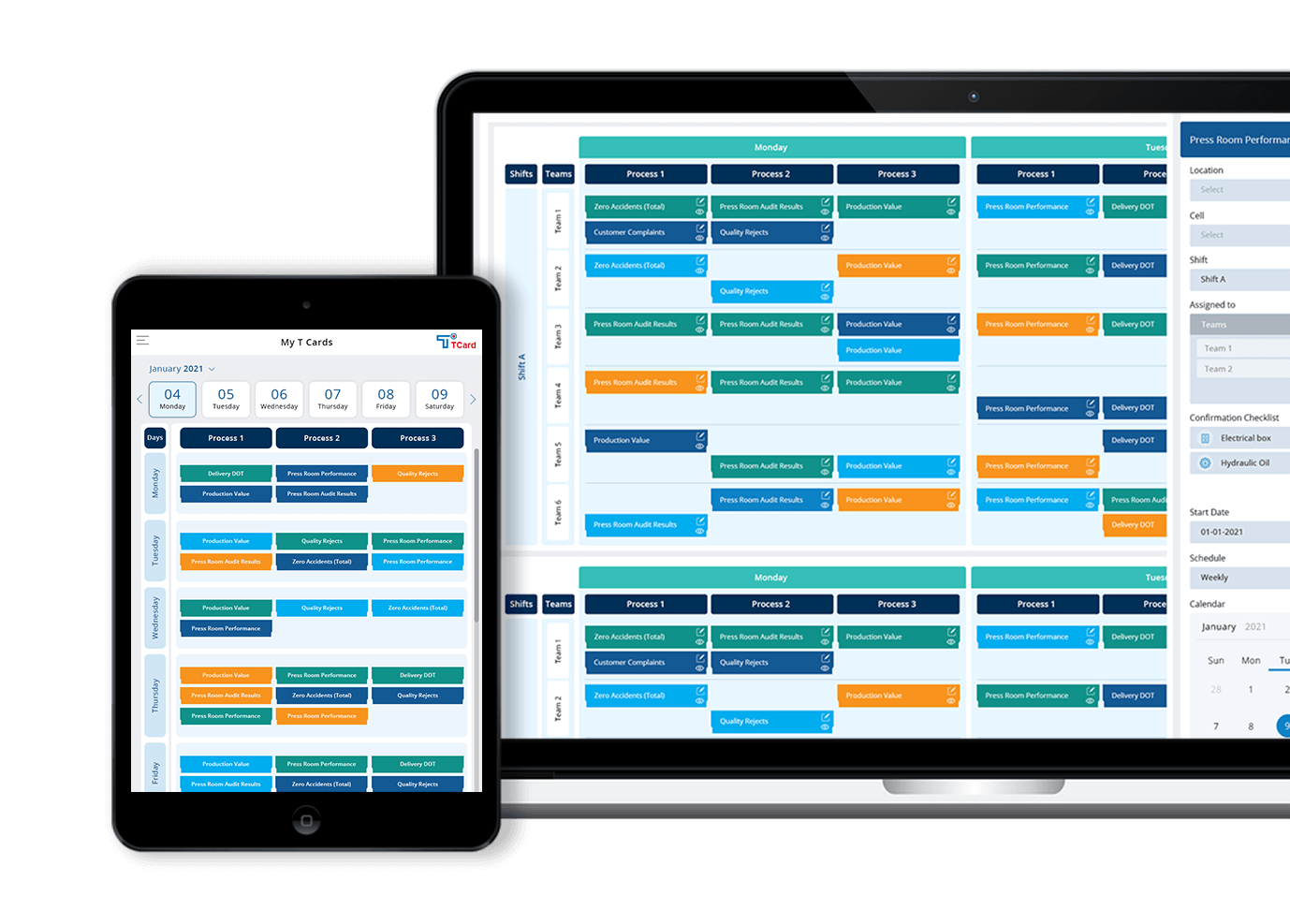
Digital Kamishibai Boards for Process Confirmation
Confirm that systems and processes are working as intended by reinforcing standards
Start Free Trial Book a DemoTrusted Partner for Businesses
Across the World
Irrespective of industries, Digital T Card Software enhanced their business processes.
What is Process Confirmation?
Process Confirmation is a systematic audit process to check whether the work is done according to the standards and control points.
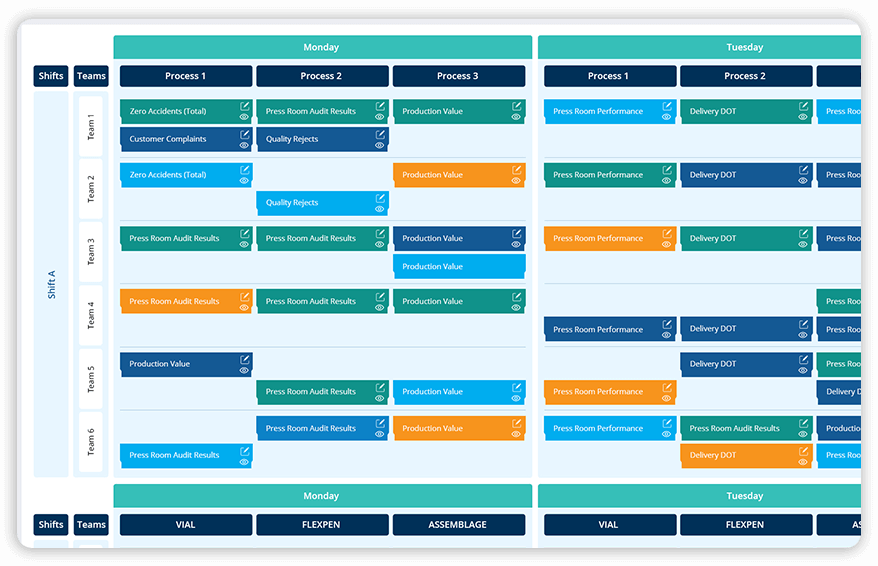
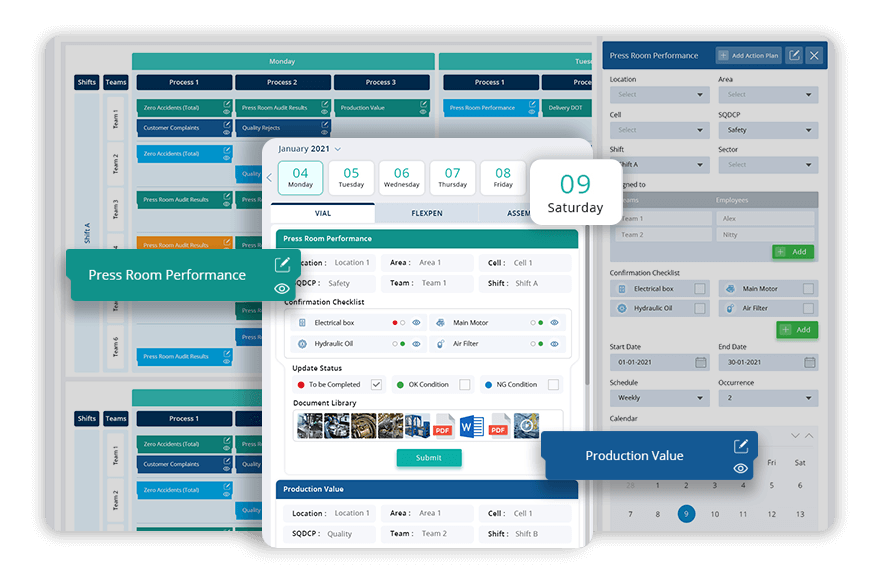
Hybrid Solution for Process Confirmation
One solution, that's all you need! Confirm that systems and processes are working as intended, reinforce standards to maintain expectations or goals of the organisation.
Read MoreWhat, Who, When & How?
Digital Kamishibai Cards contain information on what to be done, by whom, when and how for confirming process integrity. Audits are assigned and monitored regularly. Audits give valuable insights on the ongoing processes.
Read More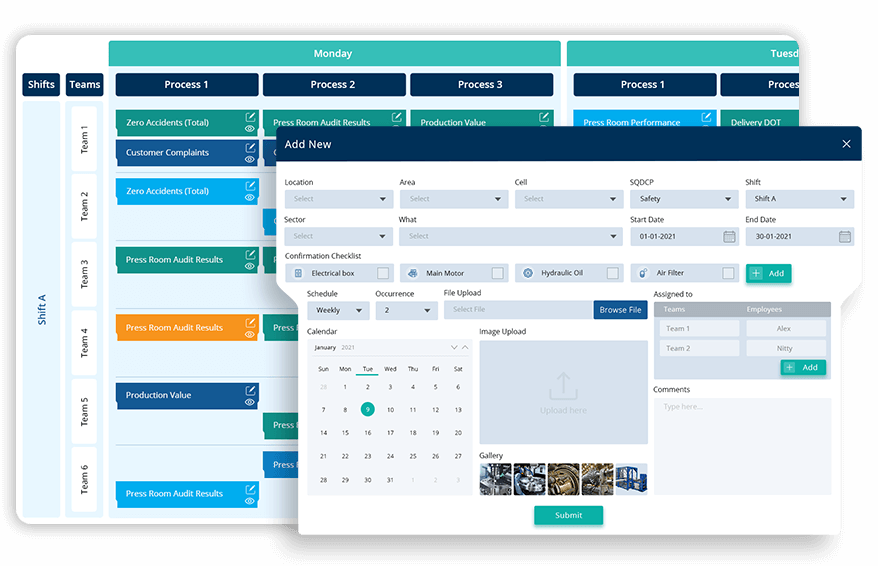
Streamline your Process Audits
Simplify and automate your process confirmation with our Digital TCard System. Track and manage processes in real-time, ensuring compliance and improving operational efficiency.
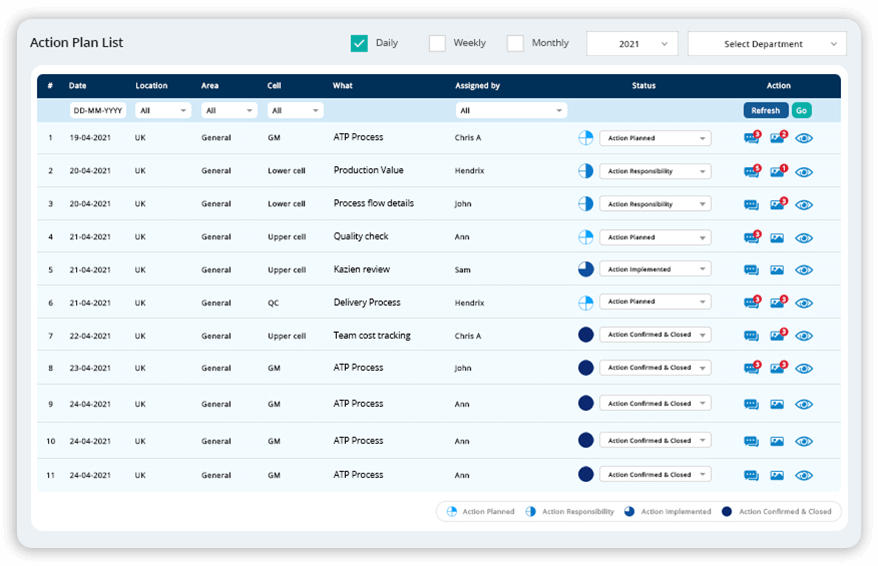
Identify Issues, Provide Support!
Check whether the current standards are still valid, if not understand and act on the root causes. Provide constant support to the team, to sustain the preset standards.
Daily, Weekly and Monthly Audits
No more delayed audits, get it done on time. Create tasks in a Click! Schedule, allocate and execute audits. Assign responsibility to individuals, track progress of the audits, initiate and implement corrective measures.
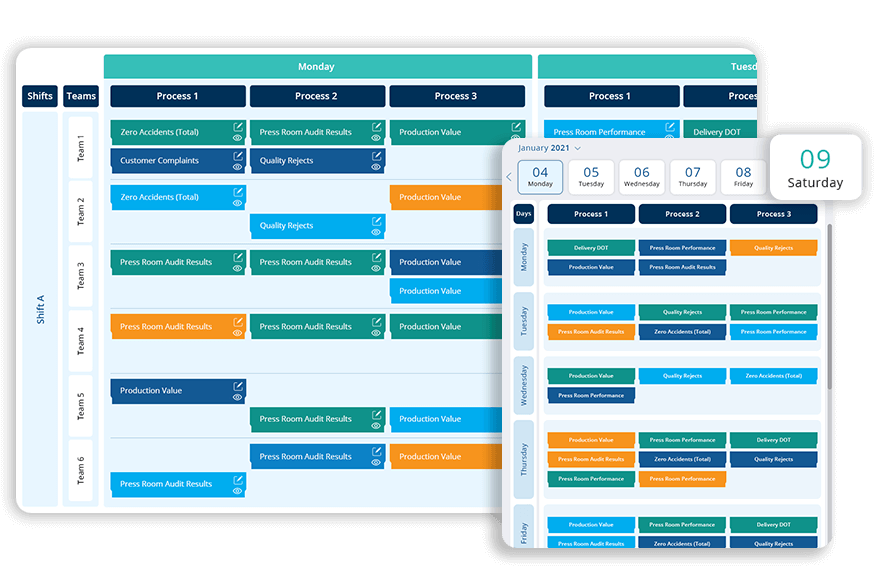
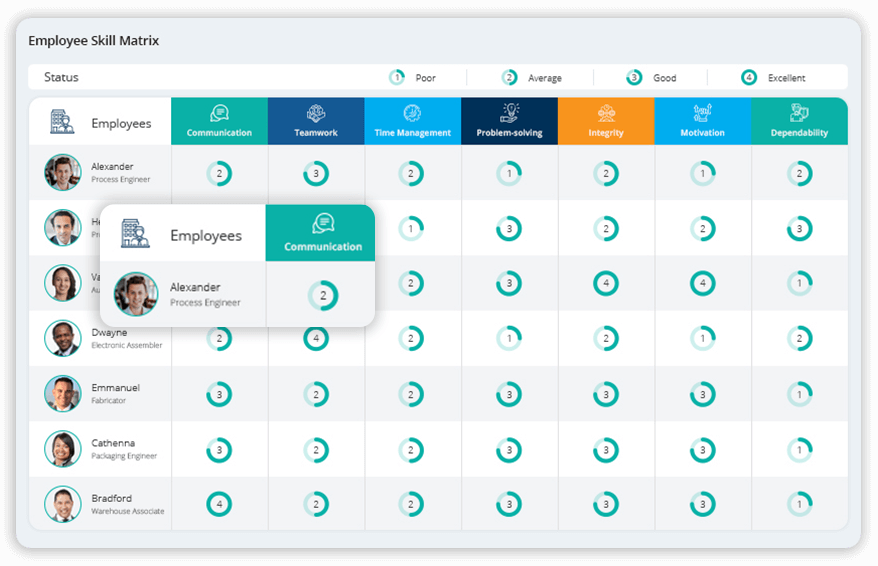
Align Goals Within Organisation
Align organisational goals from top to the bottom level. Monitor how well teams are performing, to achieve the set organisational goals. Maximise efficiency by carrying out audits regularly.
SQCDP Boards
SQCDP (Safety, Quality, Cost, Delivery and People) boards to increase daily management processes visibility. Track targets and their progress. Customise the board exactly as you want and drive continuous improvement.
Read More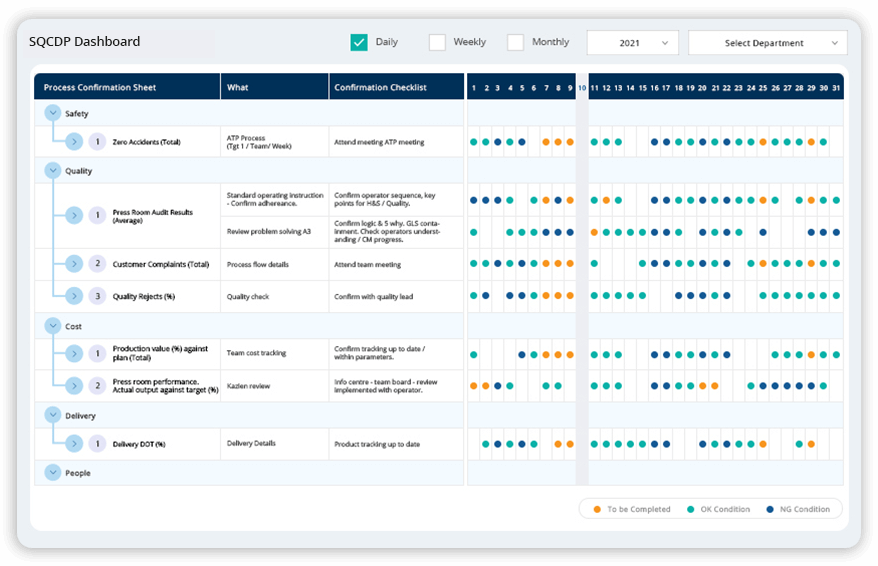
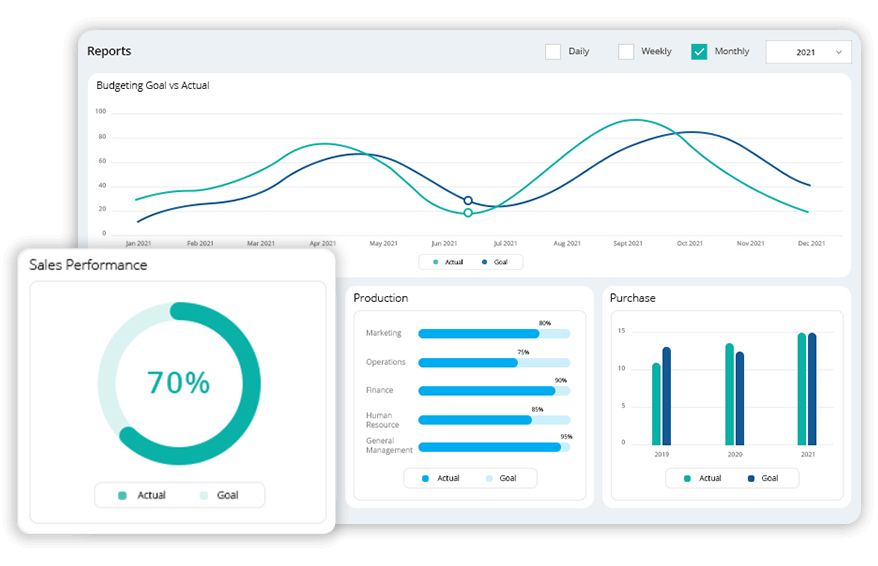
Track Progress
Feedback is important! Track and monitor performance and share feedback to improve performance. Reports on individuals and their assigned tasks.
Read MoreDynamic & Downloadable Reports
Get auto-generated reports and summaries in a click! Gather meaningful insights, to improve business performance. Precise and detailed reports.
Read More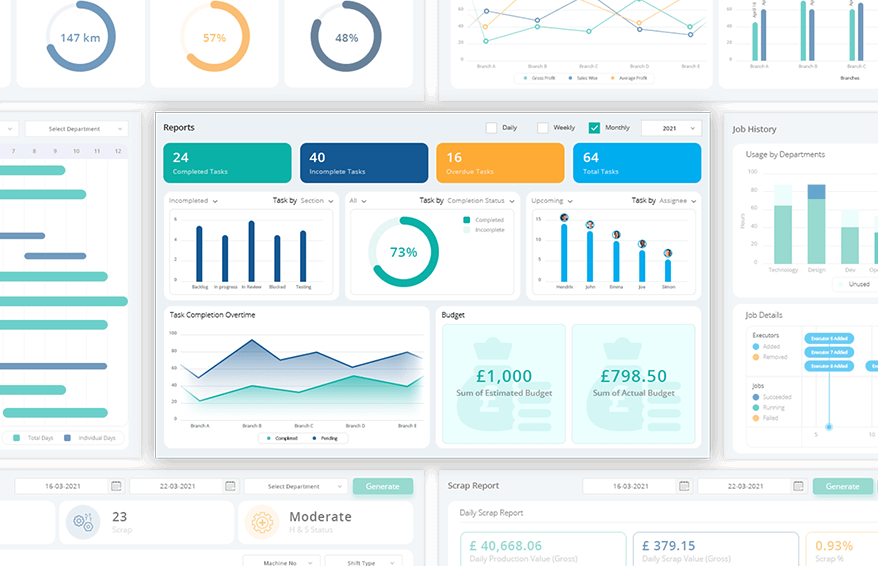
Start your 14 Days Free Trial
Track and confirm each process step effortlessly. Make your compliance audits and process reviews faster and easier.
Process Confirmation Checklist
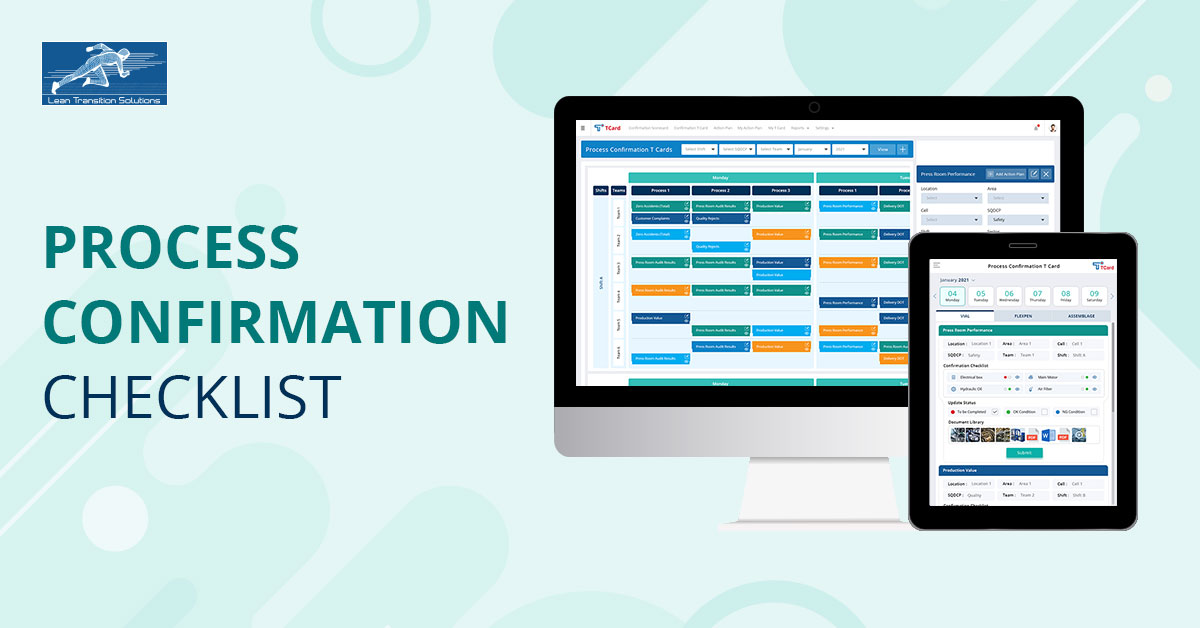
Process confirmation, sometimes called Kamishibai, is the systematic auditing of the standards and control points for the critical processes to ensure that it meets the agreed standards. It is not an elaborate audit system but a brief, informal and time-based activity. The ideal situation is the set standards being fulfilled, but there is always scope for feedback and improvements. Each leader performs the process confirmation within their responsible area and is reviewed and updated regularly.
Where is it applicable for Process Confirmation?
In addition to the everyday application in various industries, process confirmation finds special application in the following areas:
- Installing new equipment or introducing new people
- Redesigning the method
- After a Kaizen event
- During the control phase of a six sigma project.
Steps involved in the process confirmation include:
- Going to the process
- Pulling out the audit card
- Reading the instructions on the card
- Observing the process
- Asking questions
- Providing feedback
- Taking corrective action if needed
- Returning the card to the completed status
Process confirmation checklist or the audit list varies according to the industries. But some of the common checklists that are used for process confirmation are:
-
Safety:
Safety is paramount. This relates to the safety and security measures that the company observes, ranging from the safety of the machinery to the security standards which the workers follow.
- Are the workers provided with Personal Protective Equipment (PPE) like safety glasses, protective hearing devices, hard hats, respirators and full body suits and are they wearing them while performing the task?
- Are the Safety Data Sheets (SDS) of the chemicals used in the procedure available?
- Is the company equipped with safety equipment like fire extinguishers and eye washing stations? Are they in proper working condition and easily accessible to everyone?
- Are the machine guards in good working condition and installed in the right place?
- Do the workers follow the proper dressing patterns according to the nature of the job to avoid ergonomic risks?
- Is there an emergency phone number available?
- Are the safety conditions carried out according to the work permit provisions?
- Have the workers signed the work permit and are aware of the risk taken and of safety measures related to the work?
- Have the workers undergone the EHS&S (Environment, Health, Safety and Sustainability) orientation and training?
-
Materials:
For the proper working conditions, a company requires an adequate amount of materials organised in the correct sequence.
- Does the shopfloor have the required amount of materials placed in the correct order?
- Is there any deficiency affecting the production, or is the excess material causing waste generation?
- Do the workers face any delay in receiving the materials?
- Are the machinery and hand tools organised and used according to the tasks in production?
-
Movements:
Every motion inside the factory floor affects the work efficiency and product quality.
- Do the workers follow the standard work instructions?
- Is there an organised way to move materials across the production process? Should there be any addition or elimination of the steps?
- Are the operations carried out efficiently, and are there better ways to execute the task?
- Are the assembly operations uniform, or are there any interruptions in the process?
-
Location:
The safety and efficiency of the workstation are directly related to the location and the design of the workstation.
- Is the location suitable for achieving this station's objective?
- How is the area helpful for transporting the materials and delivery of the goods?
-
Reporting issues:
A sound system for reporting issues at the earliest can benefit the process.
- Do the operators have direct access to the manufacturers by which they can give feedback to them on the work instructions?
- Are the reported problems resolved at the earliest, or is there any delay?
- Are the reported problems documented?
- What are the reporting options available to the employees relating to their concerns about quality, safety or efficiency and are they aware of these options?
-
Documentation:
Documentation of the standard work instructions helps improve the quality of the processes.
- How is the standard work documentation maintained on the shop floor?
- To whom are all these instructions available? Can they understand it and review it regularly?
- What is the procedure for changing or modifying the documentation? Are the operators regularly reviewing the changes?
-
Follow up:
Follow-ups are mandatory for properly handling non-conformities, especially when they don't match the required specifications.
- What are the proposed changes to the processor area?
- How is the follow up monitored and accessed?
- What should be the new additions to future audits based on the customer reviews and corrective actions?
- If an automated platform is not used, how is it ensured that the auditors have the updated checklist?
- How is the problem addressed? Is it handled on the spot, or the focus is needed till the root cause analysis or corrective action?
-
Permit to work:
It is a documented procedure that authorises the worker to carry out the work within a specified time frame. Based on the risk assessment, they also set out the necessary precautions.
- Are all the documents referred to in the permit, like the Job Safety Analysis, Method statement etc., attached?
- If the task requires a Permit to Work (PTW), is there a General Work Permit and secondary permit present?
-
General:
The general checklist, which is common to the industries and which are carried out regularly includes
- Are the workers familiar with the nature of the job, especially when there is a risk involved?
- Do the workers have access to the site emergency numbers?
- How is the workplace left after the completion of the work? Is it left clean and organised?
- Did the area owner or designee visit the floor prior to the approval of the process to evaluate the conditions and the risks involved?
- Once the work is completed, did the area owner or the designee visit the workstation and sign the hand back section on the permit?
- Does the station have the proper equipment and fixtures needed for the task?
- Are the error-proofing devices available and in proper working condition, and do the operators use them properly?
These are some of the common categories addressed in the process confirmation audit in almost every industry, which can also be customised according to industry requirements. Moving from surviving to thriving means not being the strongest nor the most intelligent, but the one who is adaptable to the situations is the company that truly thrives. Going digital is no longer an option, it is a necessity! Digital T cards for Process Confirmation can help the organisation validate whether the processes are working as intended and reinforce standards to maintain the organisation's expectations and goals. Digital T cards can bring out meaningful quality improvements by tracking the process confirmation.
Streamline your Process Audits with ease
Implement the Process Confirmation Checklist and ensure compliance across safety, materials, documentation, and more.
Tiered Meetings the Foundation to Operational Excellence
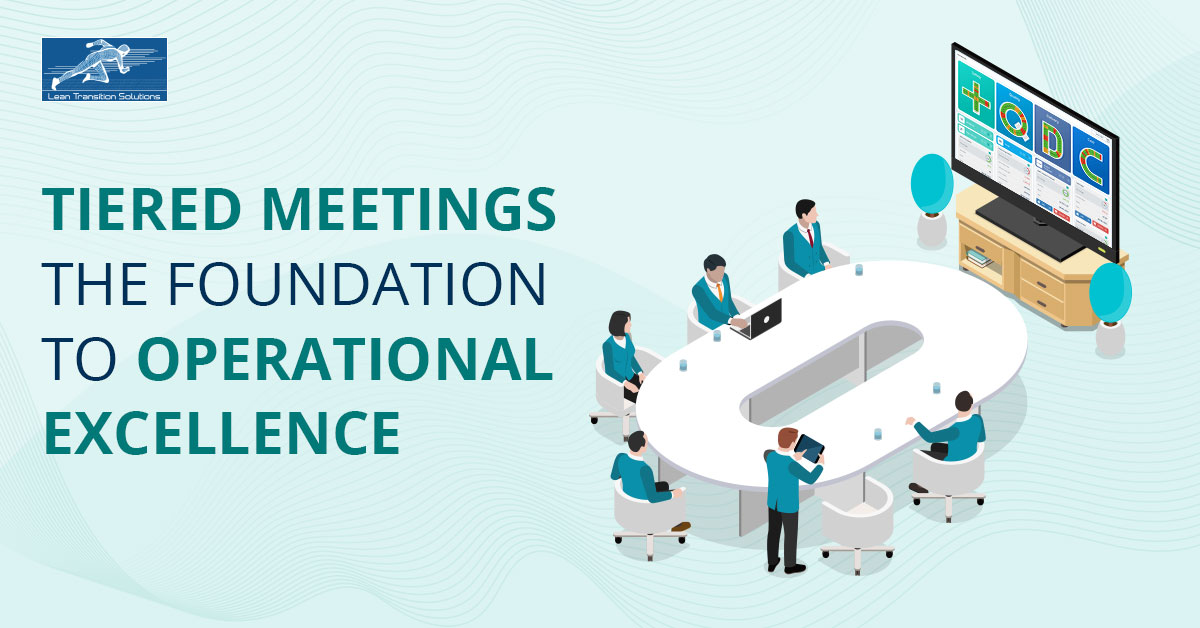
To ensure a lean culture in an organisation, Lean Daily Management System (LDMS) is a must as they drive daily performance improvements at all levels of an organisation and Tiered Meetings are an inevitable part of LDMS. Though the number of tiers may vary for organisations, the ultimate goal of these meetings is to identify and rectify issues and ensure a lean culture. The meeting allows the team to reflect on the previous day, anticipate the actions or outcomes for the next day, and discuss issues and other opportunities.
What are Tier Meetings?
In simple terms, the tiered meetings are a daily activity in which everyone will participate. Before starting the work, the team huddles in front of a Visual Management board placed on the shopfloor (SQDCP) to track the progress of the goal vs actual. Irrespective of the tier levels, the meeting aims to increase the sense of accountability, raise and address issues, continuously provide support to resolve them, and ensure an environment of continuous improvement.
As mentioned earlier, though the number of tiers may vary according to organisations, an ideal tier meeting will uphold the following guidelines.
- Tier 1: Happens at the start of each shift. The focus is on ground level issues related to processes in terms of safety, quality, delivery, cost and people issues and how processes can be improved.
- Tier 2: The team leads of each tier 1 meeting gather and discuss escalated issues. Representatives of the relevant support functions are present and assist in resolving the discussed problems.
- Tier 3: Area leaders, managers, and support functions meet together to address any system issues and plan initiatives for continuous improvement projects.
- Tier 4: Executive level focuses on both tactical and strategic parts. The top-level management are responsible for running and improving the business.
Each tier meeting relies on the other, making it an integral part of the whole system. Skipping any one of the meetings will break the chain of continuous improvement. The benefits of the tiered meeting include;
- Improve process standardisation and quality
- Provide visibility across goal vs actual
- Build a safety culture
- Develop problem-solving capabilities
- Enable adjustments to meet customer demand
- Enable an environment of continuous improvement
Tier Boards
Tier boards are the boards in front of which the team gathers and conducts the daily meetings and discussions. The board provides an overview of what is happening within each team and consists of information related to daily tasks, actual vs planned, issues, solutions and support network. Tier boards will help teams to constantly contribute and be a part of the continuous improvement process.
Digital Visual Management Boards
So far, we have discussed what tiered meetings are, their benefits and the impact they can have upon your business. One step forward, organisations are given the opportunity to use Digital Tiered Boards or Visual Management Boards to make more out of the daily standup meetings. Visual management boards are popular among organisations that look for ways to ensure a lean and continuous improvement culture. They also accelerate improvement initiatives ensuring everyone is involved in the process. Different metrics like SQDCP, SQCDP, SQDC (QDIP), QCD, SQDCL, ESQDCP, EQDCPS, SQCPL, SheQCPLDCPS, SQDCPS and SQCDPSI are evaluated consistently to provide a better understanding of where they are in the roadmap to success. Each letter in the metrics mentioned above denotes the following aspects of businesses which are important and inevitable irrespective of what industry you belong to:
- S - Safety or Site Action or Sales
- Q - Quality
- C - Cost or Customer
- D - Delivery
- P - Production or Performance or People
- L - Lean
- E - Environment
- She- Safety, Health & Environment
- I - Inventory
Why DIGITAL?
What difference does it make, if it is the traditional tier boards or the digital ones? Limitations such as lack of clarity, transparency, auto-generated reports and graphs, real-time data analysis and easy integration are overcome by the digital version of the tier boards. Digital tier boards or the visual management boards provide a holistic view of what exactly is happening in the team or departments. Readily available data makes the meetings more effective as they are confronted with updated data all the time. No information is left behind; digital tier boards ensure 100% accuracy and accountability.
Lean Transition Solutions (LTS) has enabled many organisations to transform their physical tier boards to digital tier boards or visual management boards as they have proven to be more effective. Organisations saw a surge in employee performance and process efficiency. Customised dashboards gave an overview of the selected metrics and KPIs making the data more comprehensive and precise. After implementing Digital tier boards, the daily stand meetings gave more impactful results as the team gets to know how well they perform and how their work impacts the overall process. When each person’s contribution to the organisation is analysed and appreciated, employees strive hard to achieve their individual goals, and the team wins.
- Analyse and understand information quickly
- Reduce miscommunication
- Prevent mistakes and improve safety
- Increase employee engagement and morale
Transform your tiered meetings with Digital Tiered Boards.
Switch to digital tier boards and ensure your team stays aligned with real-time data, auto-generated reports, and easy-to-access metrics.
Contents
- Lean Daily Management System
- Daily Management System or DMS meeting
- Daily Management Board
- Why is Lean Daily Management important?
- Vital components of Daily Management System
- Gemba walks in Lean Daily Management System
- Purpose of Gemba walk cue cards
- Why Process Confirmation?
- Layered Process Confirmation or Layered Process Audit(LPA)
- Application of DMS in the healthcare industry
- What is a Visual Management system?
- How is a Visual Management Board setup?
- How to prepare and execute a process confirmation?
- How does process confirmation maintain standards and processes?
- What is the purpose of a process confirmation?
- Why is it essential to have tiered meetings to drive operational excellence?
- How do you start with the Lean Daily Management System?
- How do you Sustain the Process Improvements with Process Confirmation Audits?
- How to Implement the Gemba Walk Program in your Workplace?
Lean Daily Management System
Lean Daily Management is the system that overlooks the results and processes. A daily check is done to determine whether the process is on the right track and the goals are met, whether any corrective actions need to be taken and whether the past actions and improvements are being sustained.The primary purpose of the Daily Management System or DMS is how the organisations conduct operational management to ensure their daily management goes as intended and brings continuous improvements. It encompasses all the operational activities ranging from the factory floor to the highest management levels.
Daily Management System or DMS meeting
A Daily Management System or DMS meeting occurs daily at a set time with the team doing the work standing in front of the DMS boards, and answering the questions related to the following :
- Performance of the last 24 hours and the plan for the next 24 hours
- Was the target achieved, and if not, Why? Was there any barrier to achieving it?
Daily Management board
A Daily Management board or team board is a work board used for communication within the shifts and between the different departments. By visualising important events of every change on the team board, the information flow is visualised, which prevents people from forgetting to share information with their peers. People, performance and continuous improvements are the three essential components of a team board.
Why is Lean Daily Management important?
Lean Daily Management is fundamental to the long term goal of excellence for any organisation. It allows the tracking of the goals on a daily basis to ensure that whether the right track is being followed in attaining the goals, any corrective or rectifying action is taken and checking the past activities and improvements that are being continued.
Vital components of Daily Management System
The vital components of the daily management system in lean include Daily Accountability Process, Leader Standard Work, Gemba walks and the Process Confirmation. Each of these elements overlaps, reflects and builds off each other to keep the leaders in touch with the ongoing process.The Daily Accountability Process mainly aims to engage people at every level in ensuring that they possess all the requirements needed for achieving the goal of the day and ask for help in the other case. On the other hand, Leader Standard work is the routine for the leaders at all levels to check on their teams, track the progress of the work, confirm the process standards are being followed, and find opportunities to develop the people.
Gemba walks in Lean Daily Management System
Gemba walks in a lean daily management system offers a structured solution for identifying the opportunities, developing people and learning about the day-to-day operations. Gemba walks provide insights into the value stream by allowing the leaders to collect information directly from the workers and observe the process develop in real-time. The primary purpose of the Gemba walk cue cards is for the managers on each level to take regular walks around the shop floor and be involved in finding wasteful activities. In lean, Gemba means to explore the value stream in detail and locate its problematic parts through active communication.
Why Process Confirmation?
Process confirmation is a set of process standards audits incorporated into both routine and random checks. It is the method that the managers use to test the integrity of the internal processes by going to where the work is done. The process confirmation aims to confirm whether the process is being done as it is predefined by the company's official standards and procedures.
Process confirmation activates the performance by engaged leadership on the production floor. Process confirmation is the key to checking if the factory's critical processes and procedures are executed correctly. With the presence of leadership on the factory floor to evaluate the correct execution and results of standards and procedures, safety, quality and efficiency are improved.
Layered Process Confirmation or Layered Process Audit(LPA)
Layered Process Confirmation or Layered Process Audit(LPA) is a systematic audit process which is a quality technique which focuses on observing and validating how the products are made rather than inspecting the finished products. It involves all the employees in the auditing process and includes the integrated corrective and preventive actions taken either during or immediately after the audit. It helps the manufacturers and service providers take control of the process and reduce mistakes. Process Confirmation reports on the audits help to analyse the action plans and remove the anomalies in the process.
So, what is the purpose of the process audits? It examines the results to determine whether the activities, resources and behaviours that cause them are being managed efficiently and effectively. In addition, the product audit in process confirmation examines a particular product or service, for example, hardware, processed materials or software, to evaluate whether it conforms to the requirements such as the specifications, performance standards and customer requirements.
Application of DMS in the healthcare industry
The application of the Lean Daily Management system is found helpful in various industries, and one such example is the application of DMS in the healthcare industry. The Lean Daily Management system helps break down barriers among the frontline workers, directors, and the administrator team in the healthcare industry. It empowers the frontline staff to take the lead in problem-solving with the help of the training and tools provided to them. The focus here is on the problem-solving boards, which track the metrics, gather the data, perform the root cause analysis and give the reports on a daily morning round. Similar applications of lean daily management are found in various other industries like agriculture, commerce, construction, financial services, education, transportation, textile industry, and utilities.
What is a Visual Management system?
Kamishibai board is a visual management tool similar to an hour by hour production status board used by supervisors and line managers. The visual daily management system in lean or the kamishibai boards are used for inter-day, once daily, weekly, monthly or even quarterly audits.
How is a Visual Management Board setup?
Five effective steps that can help in the setting up of a Visual Management Board :
- The Board belongs to the team: Visual Management Boards helps to understand operational performance and engage in the improvements. The manager is entitled to coach the teams to understand their performance and measure it themselves. The Board is not just a collection of graphs. A Daily Management System shows the problem-solving activities to improve the performance and lists current issues the team is working on. Rather than a place for recording data on performance, it is more of a communication board for the team.
- Don't make them the "wallpapers": Rather than just pasting them on the walls, they serve the purpose of structured daily conversations about how the team is going, the barriers to improvement and how to overcome them. The visual management boards go hand in hand with the daily meetings.
- Easily Accessible and near the workplace: The purpose of visual management boards is to be a reference point for discussions around team performance, which makes it necessary to be placed near where the teams work.
- They need not look Beautiful: Handwritten graphs and problem-solving strips can create value for the boards, indicating that the team is updating the data.
- Standardisations don't always help: The boards are located in different areas and managed by teams who perform different functions, making the boards look different. They reflect on particular priorities and issues of each team, and hence they look different. The boards becoming similar may be a warning sign that the visual management boards are not effectively maintained.
How to prepare and execute a process confirmation?
Process confirmation involves:
- Going to the concerned team.
- Observing the work in action.
- Conversing with the people.
- Checking if the processes are carried out according to the agreed standards. The remarks are registered, and feedback is provided to the concerned person on how to make further improvements or sustain these standards.
How does process confirmation maintain standards and processes?
Process confirmation will ensure that the critical processes in the business are working as intended on the shop floor. Using the TCards, the evaluation of the execution and the results of the standards can be analysed, improving the system's safety, quality and productivity.
What is the purpose of a process confirmation?
Process confirmation is the systematic way managers can see if the processes are working as intended; if not, act on the root cause. A set of process standard audits that are incorporated into routine and random checks, process confirmation activates the execution by active leadership on the production floor.
Why is it essential to have tiered meetings to drive operational excellence?
Tiered meetings allow the team to inspect the past 24 hours, review the due items, plan for the upcoming days, and share knowledge. Along with building a safety culture and improving process standardisation and quality, it also helps to develop problem-solving capabilities.
How do you start with the Lean Daily Management System?
- Gather the team around the visual management boards and prepare for the daily huddle
- Recall the past 24 hours
- Go through the daily agendas and evaluate if everything went well.
- If something has gone wrong, discuss how to fix it and what follow-up needs to be done
- Mark arrangements for the current day with safety reminders and coordination
- Break the plan into hourly targets
How do you Sustain the Process Improvements with Process Confirmation Audits?
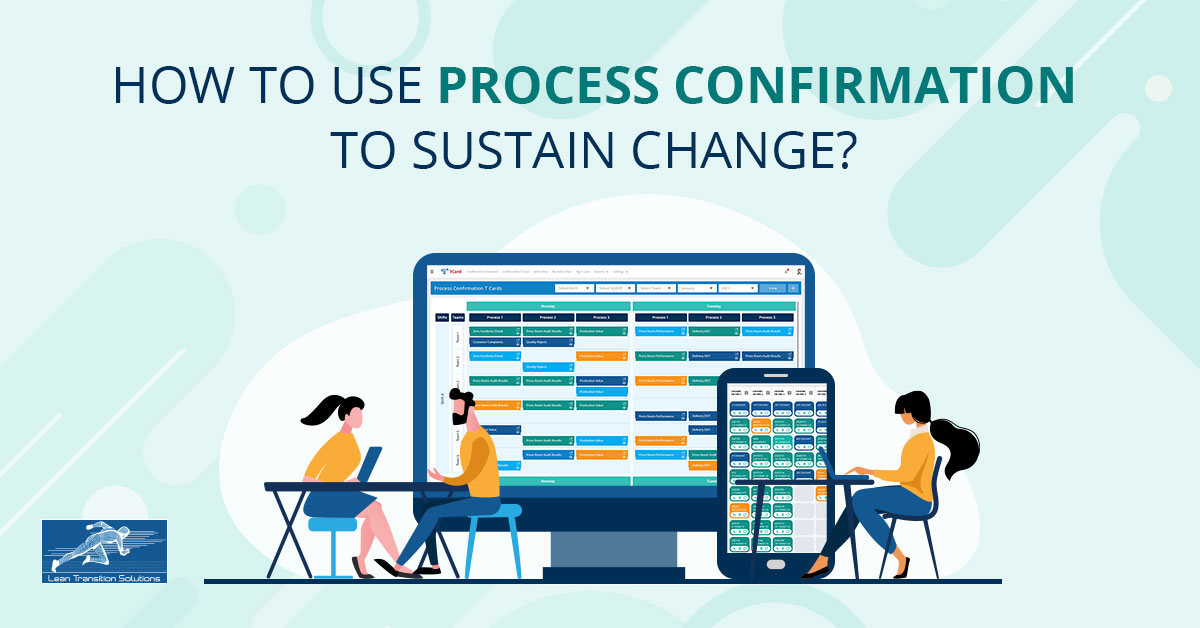
Creating new standards in your process is inevitable. People appreciate knowing what to do and how to do it. You have your training procedures simplified for your new employees. You cannot risk your customers having a different experience every time they do business with you. You need not reinvent your processes with new customers, and the list goes on. But what use can it be if it does not produce the desired results and cannot sustain that improvement in the processes?
Process confirmation can be your solution to check if the processes are being done how they are supposed to. Process confirmation can determine why people cannot follow your process standards and what keeps them away from doing so. As Tom Mentink in his video Make new standards stick in your operation | How to use Process Confirmation to sustain change says “Process Confirmation is the structured way to check if any standard is actually performed correctly in daily practice, which of course is doubly important for new standards or standard operating procedures that have shown to be deviated from in the past.”
So what do we check in a Process Confirmation? Understand the process first. Note down the key points of it. These key points can save your process confirmer's time while doing the Gemba walk by acting as the checklist he needs to consider while reviewing if things are going rightly. Check if it conforms to the process standards.
How can the process confirmation be used to sustain these changes or new standards? It works in a sequence. Have a detailed understanding of the process that needs to be confirmed. What are the key points that need to be looked into? Instead of going through the work standards every time, you document the Key points that need to be considered while confirming the standards. Link the key points with the standards. Check if the processes are performed according to the agreed standards. Suppose the answer is a yes, well and good. But if it is a no, find out the obstacle preventing them from following the standards.
Make your T Cards out of your Process Confirmation. It can help you confirm your standards, hands down. Slide your T cards into your process confirmation overview boards. Take out the card with the details of what is to be confirmed. Once it is done, change the red side of the card to its green side and leave remarks on it. Place the green card back into the board. Digital T Cards can make it even more effortless.
At the end of checking, if you don't have much bigger obstacles, let it run or register the remarks.Discuss it thoroughly with the person responsible for the process or in your daily meetings. Check with them if the new standards are working well with the progress and whether they will be sustainable in the organisation, or do we need to take additional actions to ensure that the new or improved process will be sustainable?
For any new or old standard that is not producing the desired result, ensure that the team has the proper resources and training to do the right things in the processes and make it stable. Your process improvements will be reflected over time only if the proper care is taken to sustain them, and Process confirmation facilitates it.
How to Implement the Gemba Walk Program in your Workplace?

Thinking that counting on the statistical reports and solving the theoretical issues alone can solve your real problems can be a misconception. To have real insights into what is happening inside an organisation, the leader needs to have an overview of what is happening on the shop floor. Spend time observing the workplace. Do the Gemba walk. Go, Look and See. This makes it possible to gain first-hand knowledge of what is happening within the organisation. Problems that generate new ideas and significant process improvements can be resolved by having a close view of a process.
Let's have a look at how can Gemba walk be implemented in an organisation.
The implementation can be divided into three phases:
Before moving to the implementation steps, who performs a Gemba walk?
The execution of the Gemba walk involves a team which includes a manager or director, a facilitator who knows the lean tools and methodology and an Environmental Health and Safety(EH&S) representative. The area owner is needed in the pre-Gemba and later phases to facilitate and provide the resources required to complete it. Another unavoidable factor is your frontline presenter, a team member without which there is no Gemba walk.
Pre Gemba Phase:
- Prepare the team
- Have a plan
- Follow Value stream maps or process flows
Gemba Walk:
- Focus on processes and not on people
- Document your observations
- Ask questions
Post Gemba Phase:
- Mix up the schedules of your Gemba walk
- Follow up with employees
- Measure key KPIs
Detailing each step can help you understand it better.
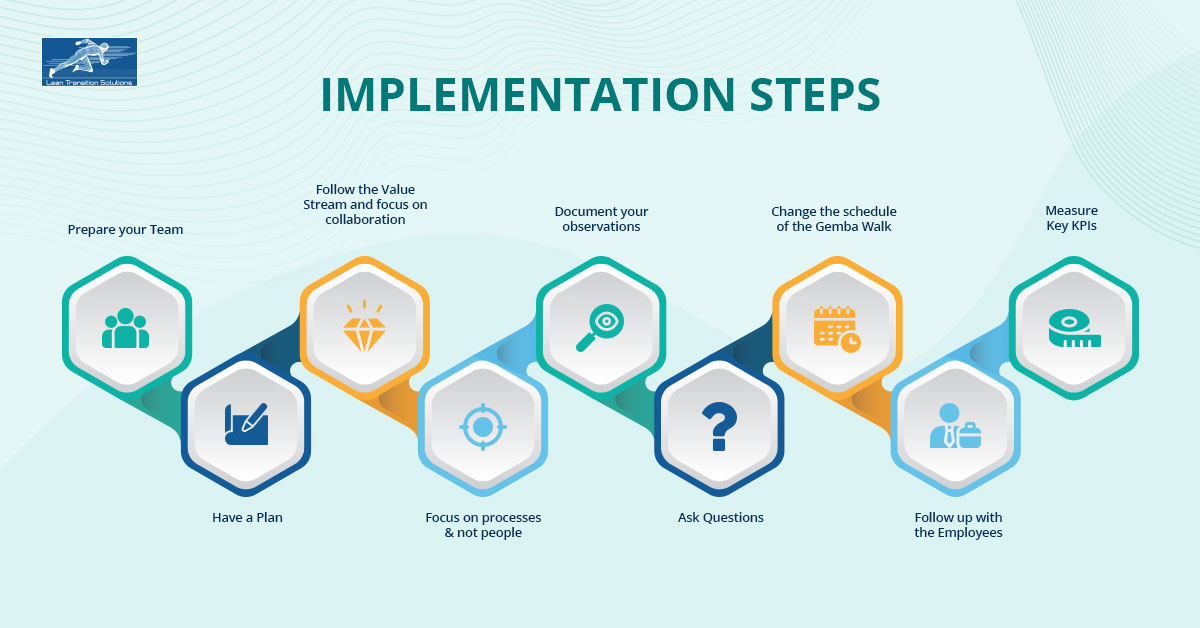
Prepare your Team
Gemba walk is a collective strategy that works best when the team fully understands the concept and its purpose. The leaders should equip themselves by getting familiar with the processes and preparing the relevant questions to find the improvement priorities before the Gemba. To get the most out of the Gemba, the manager should be able to communicate with his team what the Gemba walk consists of and how it will benefit them. Make the team understand that the objective is to observe and improve the process and not evaluate their performance but to find improvement ideas and eliminate wasteful activities.
Have a Plan
Plan before your Gemba. Every Gemba walk should have a specified goal associated with a concern related to a particular KPI. The leader asks questions about the observed processes.
Follow the Value Stream and Focus on Collaboration.
Focus on the value stream. Following the value stream flow helps expose the areas with a high possibility for waste and resolve them quickly. Invite your team to share their ideas and propose areas of improvement in the processes. The frontline workers directly linked to the factory floor can give more insights into the strategies. Employee feedback can be a great way to involve your team in the processes and identify the key opportunities you may not otherwise miss.
Focus on Processes and not People
Understand that Gemba walk is not a performance evaluation system for your employees. Observe, understand and improve the processes. Make your team understand that the questions you ask come from a genuine desire to understand the procedure comprehensively.
Document your Observations
It will be challenging to remember everything that happens around a Gemba walk, so it is better to have tools that can log your observations. Digital Tcards can help you here. Using T Cards, you can optimise your data collection time, analyse the data in real time, and proactively identify the issues and opportunities.
Ask Questions
Ask your employees why they do the things and how they do it. Dont assume that all the processes are carried out according to their standards.
WHO
Who are the people involved in the processes that you observe?
Who provides input for the processes?
Who are the customers of the processes?
WHAT
What are the inputs and outputs of the process?
What obstacles inhibit the workflow or produce waste?
WHERE
Does the space where the work is performed conform to 5S?
Are the necessary materials and equipment conveniently located?
Do you notice the waste of motion?
WHEN
Are the process inputs available when needed?
Is the work from this process being pulled through by the next, or do outputs sit idle?
Is the waste of waiting observed?
WHY
What value does this work add to the customer?
Change the Schedule of the Gemba walk
Do not conduct the Gemba walk at the exact time every day, week or month if you want to recognise the irregularities and issues. Mix up the schedules so that you have a hold over it. To have a better understanding of what happens in the process do your Gemba walks at different times a day, days of the week and weeks of the month.
Follow up with the Employees
It is crucial to have a follow-up with the employees. Communicate what you have comprehended and the subsequent measures that will be taking place. It is essential for your team members to be aware of the following steps before implementing them. Managers should ensure a smooth transition by allocating improvement tasks to the respective teams.
Measure Key KPIs
After implementing the improvement projects, a follow-up of it should be done. The performance needs to be tracked, and the KPIs should be measured to analyse if the desired results are achieved.
No matter what your industry is, Gemba walk can be implemented in your industry, and it can help to accommodate the vertical and horizontal nature of the companies. Improving a business's processes will involve exploring approaches in all hierarchical layers of the organisation and involving staff at all levels. Gemba walks can do this by fostering greater communication and providing more transparency and trust between the layers of the team and the stakeholders.
We Customise the Digital T Card App
for Different Industries
Ready to elevate your process confirmation practices?
Embrace the power of the Digital T-Card System to streamline operations, ensure compliance, and drive continuous improvement.




